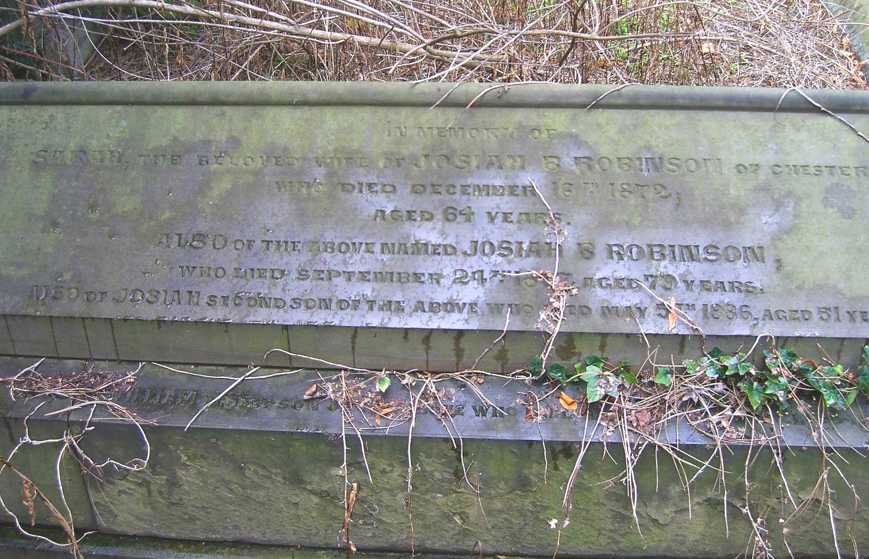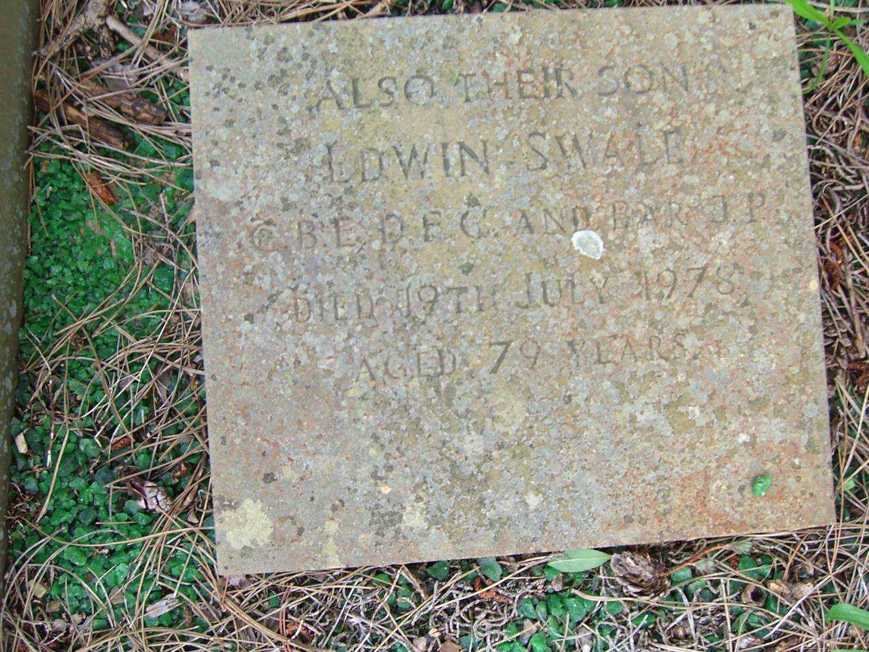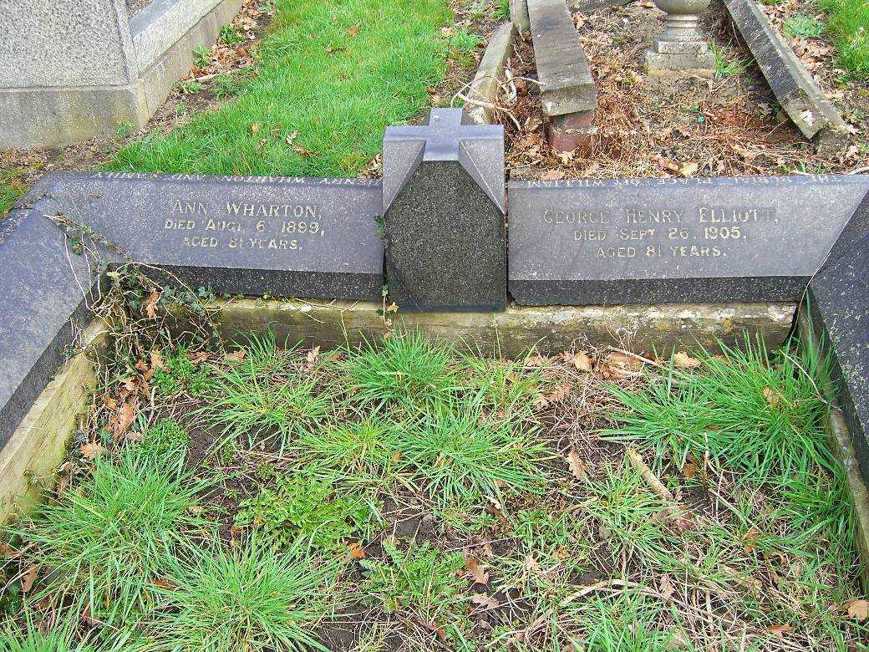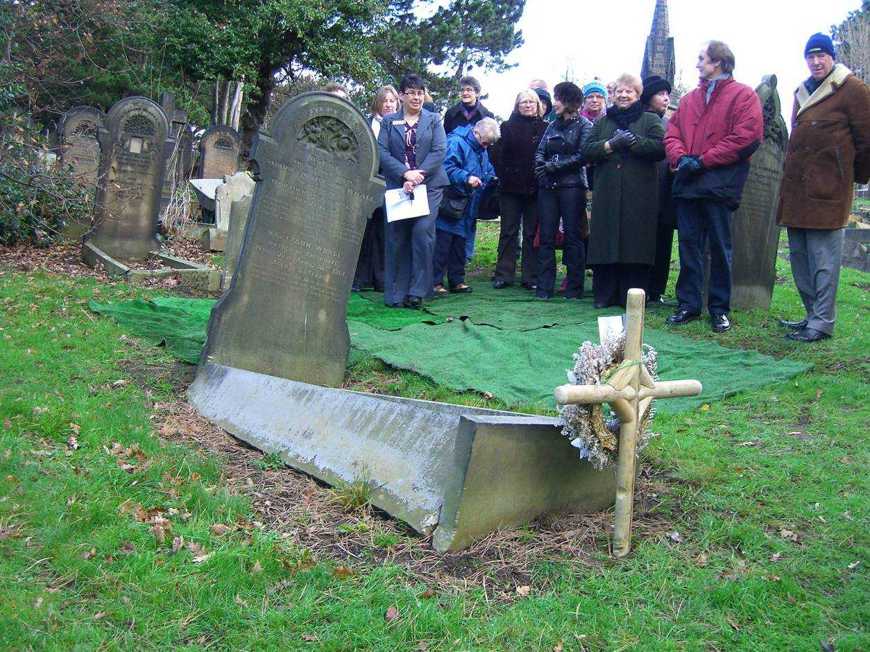Spital Cemetery - graves of special interest
Friends of Spital Cemetery welcomes new members. If you are interested in joining, please email thefriendsofspitalcemetery@gmail.com or find them on Facebook.
Graves of interest in Spital Cemetery

This is the grave of a priest of the late 12th or early 13th century, who served the Leper Hospital, which stood near this place. His skeleton was found in a local garden and he was re-interred in the cemetery.

J T Spooner HMS Powerful died 24 March 1918 aged 17. He is the youngest to be buried in a war grave and the only sailor.
The Commonwealth War Graves Commission cares for 42 graves, including four personal memorials and two with personal and CWGC headstones.
Most are Hopton Wood stone. There are 35 for World War One and 7 for World War Two. The eldest is 51, the first date is April 1916 and the last date is April 1921.

Memorial to two brothers killed within 24 hours of each other – rare for this to have happened. Joseph and Benjamin Goddard died on 24/25 June 1917 serving with the Sherwood Foresters. Both were employed at Barlborough Colliery and their parents lived at Lower Hipper St Chesterfield.

A photograph of the grave of Edward Eastwood, died 1910; his wife Abigail; Joseph Moore, died aged 14; George Albert, died 1934 and Susie Blanche Eastwood, died 1969. Also a memorial to Edward’s eldest son Edward Isaac, who died in St Petersburg 1884.Edward and his son George were proprietors of Eastwood Wagon Works. Both they and Blanche served on Chesterfield Borough Council. They were benefactors to the town, giving the land for the Eastwood Parks in Hasland and Calow, and financing the school rooms attached to the Ragged School and the Independent Chapel.

Josiah Robinson, died 18 December 1872, aged 64 years. Josiah was the brother of John Bradbury Robinson, founder of Robinsons. He was the auditor to Chesterfield Borough Council on six occasions and was one of the original members of the Burial Board for Spital Cemetery. He was one of George Stephenson’s executors.

This stone now lies on the grave of Arthur Swale, who was a well known Chesterfield draper, and his wife. Edwin Swale was one of the Few of the First World War. He joined the Royal Naval Air Service in June 1917. During his service with the RNAS and RAF, he destroyed 17 hostile aircraft. He was awarded the DFC and a month later a bar to the medal. He returned to Chesterfield and served as councillor for 25 years.


The top grave is that of Francis Henry Hart, who fought in the Peninsular War. The battle honours on the headstone read Toulouse, Pyrenees, Orthes, Vittoria, Nive, Albukera, Nivelle, and Busaco. The family came from Somerset; Francis only came to Chesterfield at the end of his life, possibly to live with his son Gratian, who was a doctor at the hospital.
An adjacent memorial records the death of Gratian's twin sons, aged 3 months, his wife, aged 32 and another son, aged 11. Gratian was a surgeon. He married again and by his second wife had a daughter Marian, who survived. By 1881 they were back in Western Super Mare.

The grave of Thomas Philpot Wood and his wife Esther. Also buried in the grave was Thomas Philpot Wood Jr. He was an Honorary Freeman of the Borough of Chesterfield, served on Chesterfield Borough Council between 1863 and 1910 and led the campaign by the people of Chesterfield to raise the money to purchase the land for Queen's Park.

The grave of Robert Buchanan, who died at nearby Spital Lodge (now demolished) in mysterious circumstances.

Resting place of William Henry Wharton and family. Wharton was an iron founder with works in Spital; they were manufacturers of manhole and drain covers, which can be seen around the town.

Five girls, who died in a fire in the dressing rooms of the Palace Theatre fire on 27 December 1911, are buried in unmarked graves at foot and side of this grave.

Antonio Nicolau da Silva came to Chesterfield about 1911 and had been here ever since, apart from trip to see his mother in Portuguese India and uncle in Portugal. He studied for LRCP and LRCS at Edinburgh University. He returned to Edinburgh to study for FRCS and, during a visit to his fiancée in Chesterfield, he died of pneumonia resulting from Spanish flu on 22 October 1918.

Grave of John Kinder Swallow, founder of Swallow's department store. Other members of the family are buried nearby and elsewhere in the cemetery.
